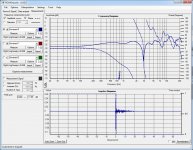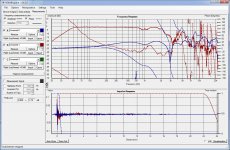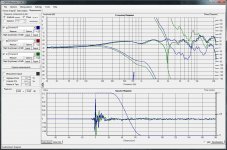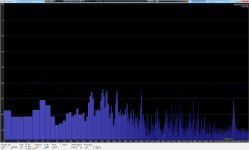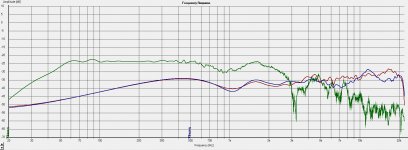That looks real. If you clear out enough space so that distance to the floor is the first reflection, you can probably get the gating limit down to ~500Hz (it still won't be terribly accurate below 1k, but you'll get a better idea of the response trend). Do you have them out of phase on purpose to see the crossover summing?
Thankyou Laurence, very useful info. Will measuring their response in my room be useful, or is better to measure them in an open space. (Or both where possible)
You need to learn what the measurements mean in your room, nearfield, farfield, and outside. None of them is exactly correct, but each teaches you something.
I prefer ARTA to HOLM. I also have Sound Easy. Does everything, but easy or cheap it is not.
To understand measurements, please pick up Joe D'Apollito's book, Testing Loudspeakers. It does not cover the modern digital testing, but it does cover the physics. You need to understand what you are measuring.
Looks pretty excellent to me. Now how about swapping that tweeter polarity and getting the HF level dialed in!Ungated woofer response measured at 5mm from the grille.
Last edited:
Had a look for that Joe D'Apollito book, Testing Loudspeaker's and found that it is nearly £50 in the UK. (bit expensive for a book)
Switched the tweeter phase and this is what i've got. (green is antiphase) I'm guessing the big dip at 8KHz is something to do with the room.
Switched the tweeter phase and this is what i've got. (green is antiphase) I'm guessing the big dip at 8KHz is something to do with the room.
Attachments
The uncalibrated mic will not be super reliable up there, but that ~15dB swing from 8-12k is probably something. You can shorten your gate and/or measure from a little closer, but I think it's more likely to be the cabinet edges. You can check that by putting something on them and seeing what changes.I'm guessing the big dip at 8KHz is something to do with the room.
I'd say the treble looks a bit hot overall, but that'll have to be up to your ears. You've got good pretty good summing at crossover now; watch that it doesn't get messed up when making changes.
I'll have a look at it tomorrow and see how removing the grilles affects things. I can say that they are still a tiny bit on the bright side still with a 2R / 12R L pad arrangement. (but not particularly fatiguing to listen to and no hint of sibilance) I took a few extra photos while i had them apart for reference. (yellow stuff is blutak used to block old screw holes, not pretty but you don't see it with the grilles fitted)

Built exactly to the falcon acoustics 37K item.
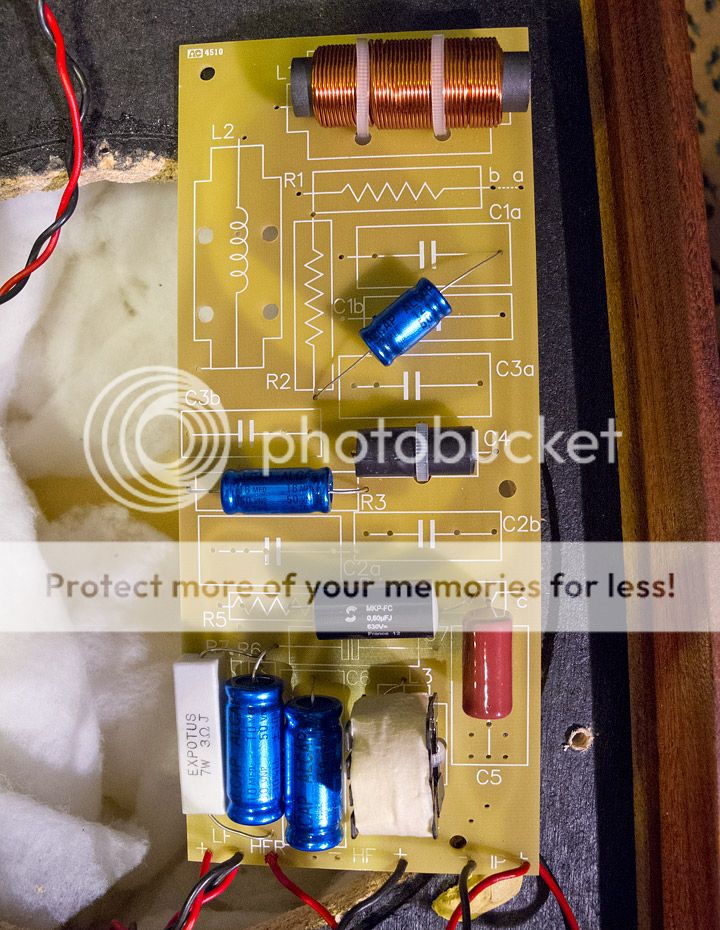

Chamfered around the woofer only.
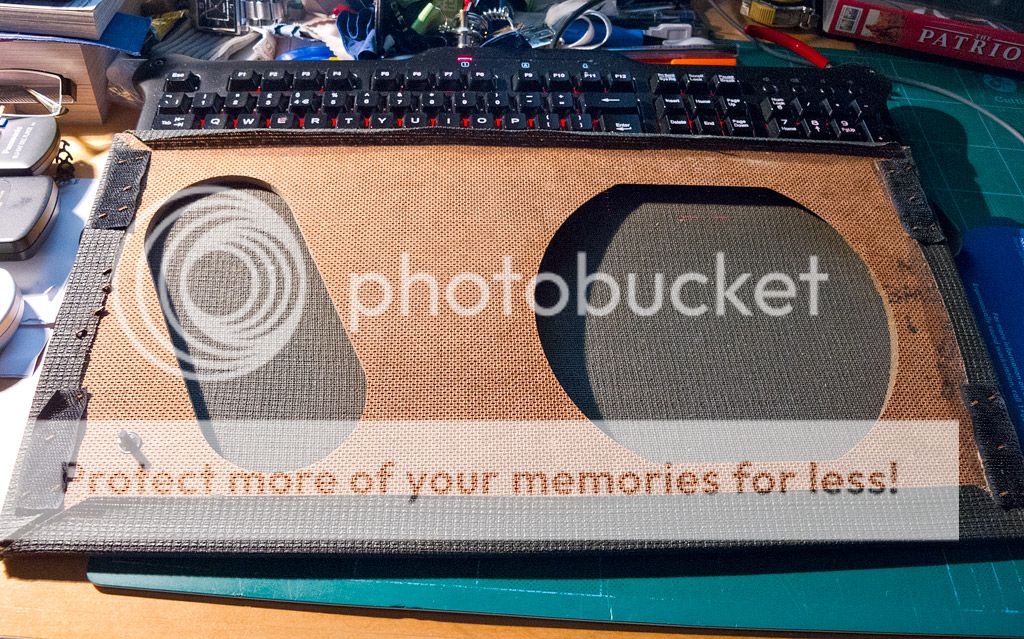
I have also noticed that there is a peak in the signal coming from the mic at around 14.2-14.5KHz, this seems to disappear when the microphone boost is removed in the sound card control panel. (but then the levels are probably going to be too low) The sound card is an asus xonar essence ST. I still semi regret buying it instead of the EMU 1212M i was considering. I've still got my older X-fi with audigy drive bay if that's any better.

Built exactly to the falcon acoustics 37K item.


Chamfered around the woofer only.

I have also noticed that there is a peak in the signal coming from the mic at around 14.2-14.5KHz, this seems to disappear when the microphone boost is removed in the sound card control panel. (but then the levels are probably going to be too low) The sound card is an asus xonar essence ST. I still semi regret buying it instead of the EMU 1212M i was considering. I've still got my older X-fi with audigy drive bay if that's any better.
Attachments
Given it another go this morning with and without the grille at 15" without microphone boost. Results don't look wildly different with/without the grille fitted.
Blue is grille fitted
Red is without grille
Green is a repeat of the LF response test (measured @ ~3cm this time)
Blue is grille fitted
Red is without grille
Green is a repeat of the LF response test (measured @ ~3cm this time)
Attachments
Last edited:
As far as the grill thing, if you imagine a straight line through that trend, you've gone from something like +/-5dB to +/-2dB, which is a pretty solid difference. Maybe not subjectively a huge deal that high in frequency, though.
Anyway, next step is probably to get real imported min. phase measurements (and real, preferably measured, impedance) into the sim software. The easiest way to get accurate sims, I think, is to get simulated sum of both drivers without crossover to overlay accurately with a measured sum of both drivers. How to do that is kind of tricky and depends on how you use which sim software, but you seem to be able to figure this stuff out pretty fast. You need to get things wired up to use a different amp channel for each driver so impedance is safe, of course.
Anyway, next step is probably to get real imported min. phase measurements (and real, preferably measured, impedance) into the sim software. The easiest way to get accurate sims, I think, is to get simulated sum of both drivers without crossover to overlay accurately with a measured sum of both drivers. How to do that is kind of tricky and depends on how you use which sim software, but you seem to be able to figure this stuff out pretty fast. You need to get things wired up to use a different amp channel for each driver so impedance is safe, of course.
The gate is marked on there (500Hz on the last one, but the effects of it will reach higher). I thought it was an artifact at first too, but as Dissi points out, it looks just the same on the nearfield measurements, so it's real unless it's the mic, but the notch filter makes sense.
- Status
- This old topic is closed. If you want to reopen this topic, contact a moderator using the "Report Post" button.
- Home
- Loudspeakers
- Multi-Way
- Simulation accuracy with boxplot
